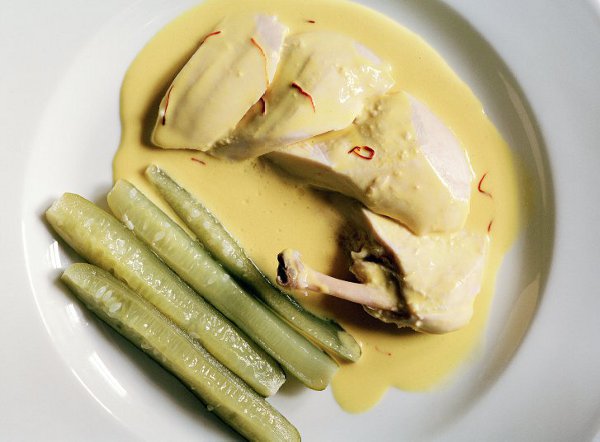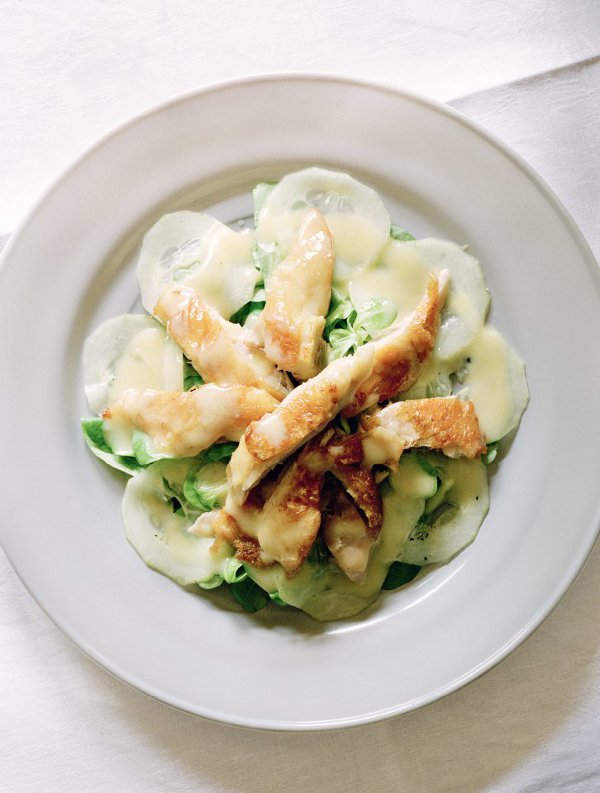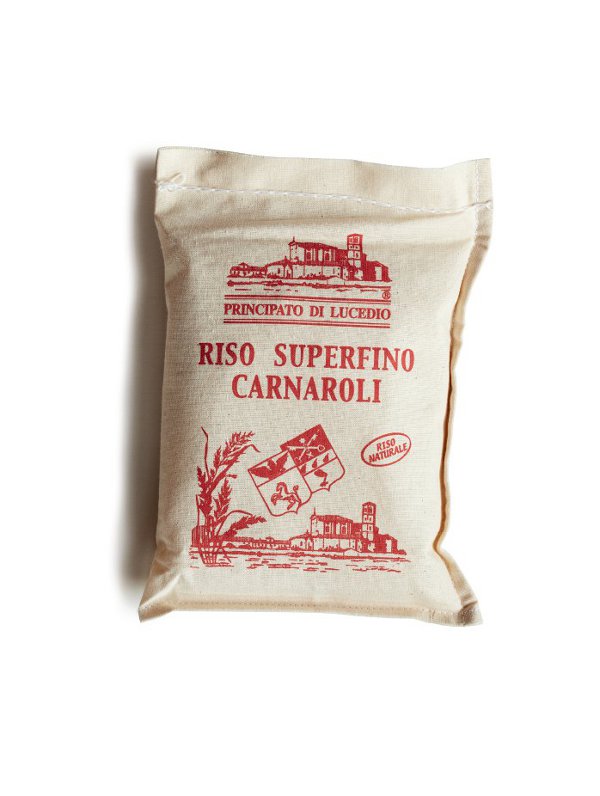Good Cook (12 page)
Authors: Simon Hopkinson

serves 2, generously, as a main dish,
or 4 as a first course
4½ oz mussels, de-bearded and well washed
9 oz dry sherry
2–3 tbsp olive oil
2 cloves of garlic, crushed and finely chopped
1 tsp curry powder
2 oz piquillo peppers, from a jar (the El Navarrico brand is excellent), finely chopped
pinch of dried chilli flakes
1 large tomato, peeled and chopped to a mush
9 oz carnaroli (or other) rice
1 tsp saffron threads
2 small spring onions, trimmed and finely chopped
1 tbsp chopped parsley
4 tbsp butter
I was unsure whether to refer to this as a pilaf, a kind of baked risotto sort of thing, or almost a faux Spanish paella. Prosaically, I finally decided upon the simple description of “rice with mussels and saffron,” for that is exactly what it is. And a very moreish result, be assured.
I use the Italian risotto rice, carnaroli. More than anything else, this particular rice is one of the easier ones to cook. In Venice, most cooks would probably use vialone nano, a smaller, tighter grain and, in fact, the most regularly employed when making seafood risotto in that city. Feel free to use it if you like. There is also absolutely no reason at all why one shouldn’t use basmati rice (Tilda, for preference, as it always remains as nicely separate grains and rarely overcooks), turning this dish into a true seafood pilaf. Finally, the Spanish rice calasparra, the one for making paella, could further be an option. The choice is yours.
Preheat the oven to 375°F.
First, check for any open mussels that refuse to close up again when briskly tapped; if they refuse to shut, discard them. Put the mussels into a large pot, pour over the
sherry, bring up to a boil, then clamp on a lid and allow the mussels to cook for about a minute. Lift off the lid and shake the mussels about so that those underneath end up on top. Cook once more, lidded, for about the same time. Turn off the heat and check that the mussels have popped open; if not, cook for a touch longer. Drain through a colander suspended over another pan, shake them a little to dispel any liquid caught in the shells, and leave to drain for few minutes.
Shell the mussels (ditch any that stubbornly will not open), put the meat into a bowl and throw out the shells. Pour the mussel juice through a very fine sieve (to collect any grit or bits of shell) into a measuring jug. Top up with water to give a final measurement of 14 oz. Using a solid, lidded pot, heat the olive oil and in it quietly fry the garlic, curry powder, peppers, chilli and tomato, until any liquid (from the tomato) has been driven off, and the mixture is almost a purée. Now add the rice and stir it around briskly, making sure that it is well coated and glistened by the oily mixture; add a touch more oil if you like. Pour in the liquid from the jug, add the saffron and bring the mixture to a simmer. Tip in the shelled mussels and stir well. Put on a lid and slide the pot into the oven. Cook for 20 minutes.
Remove the pot and leave to stand for 5 minutes without removing the lid. Take it off now, deftly stir in the spring onions, parsley and butter, place a dish towel over the pot and clamp on the lid once more. Leave for a further 5 minutes, so allowing any excess steam to be absorbed and, also, to give a final swell to the rice; the final texture should be somewhere between a pilaf and a risotto. Serve directly from the pot, spooned on to hot plates. I see this gorgeous plate of food as a meal in itself, with no other accompaniment necessary.

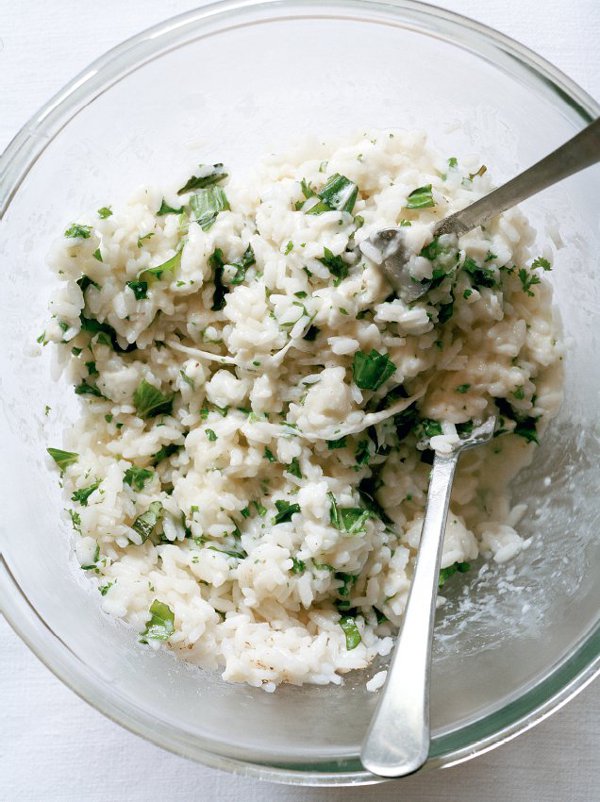
serves 2, generously
9 oz carnaroli (or other) rice
salt
5½ oz buffalo mozzarella, cut into small chunks
3¾ oz freshly grated Parmesan, plus 2–3 tbsp extra
1 very small clove of garlic, crushed and finely chopped
bunch of basil, leaves only, roughly torn
4 tbsp softened, unsalted butter
freshly ground black pepper
This dish of rice emerges as a kind of boiled and sticky, nicely bland mock risotto. But, of course, it is no such thing; the process itself is against it from the start. Although the description “boiled and sticky” may not exactly thrill the expectant taste buds, the assembly is a happy one—and it is very easy to prepare, too. Just think cooked rice and cheese, together with one of the most fragrant of all summer herbs, and with that lovely taste of creamy butter, too.
Boil the rice in about 1 quart of salted water, till just cooked. Briefly drain over a serving bowl, tip out the water (this has now heated the bowl), and now tip back half the drained rice into the hot bowl. Add the mozzarella, Parmesan, garlic, basil, butter and pepper, then cover with the rest of the rice and leave to settle for a minute or two. Now, stir vigorously, while also lifting and dropping back the rice, until the mozzarella becomes stringy—two large forks work best, here. Serve immediately on hot plates, and hand extra Parmesan at table.
serves 4, as a first course
2¼ lb fresh peas (unpodded weight), podded, and with the pods reserved
approx. 1 quart light chicken stock
6 tbsp butter
1 onion, very finely chopped
7 oz carnaroli (or other) rice
salt and freshly ground white pepper
3–4 tbsp freshly grated Parmesan
1 tbsp finely chopped parsley or, more controversially, mint
Again, to the Veneto, for one of the simplest and most perfect bowls of comfort eating: “risi e bisi”—sloppy rice and peas. It is similar to a risotto with peas, but much more soupy in texture. I recall a very late springtime lunch enjoyed at Harry’s Bar in Venice, fresh off the train from Florence, and at exactly the time when the first fresh peas had just come into season; but then, at Harry’s, it would be unthinkable to serve this dish at any other time of year.
The risi e bisi was served in a deep bowl, filled to the brim, of the palest green and piping hot. Extra Parmesan was stirred in at table and that was my lunch. Just that. Well … maybe a glass or two of prosecco, just to show willing.
By the way, do not worry that the peas will have lost a little of their bright color by a more lengthy cooking than usual; peas do this naturally, but they also taste very good. I would say flavor over the look every time, with a dish such as this.
Note: although not exactly authentic, I sometimes like to use mint instead of parsley, here. Mainly, this is because I really like the taste of peas and mint together, which is a very English marriage. No doubt this would be deeply frowned upon by a strict Venetian cook, so I would change the name to “sloppy rice and peas with mint.” That should do it.
Take the empty pea pods and place them in a food processor. Process to a coarse mush and put them into a large pan. Pour on the stock and simmer the mixture for about 30 minutes, until the stock is nicely pea-flavored and lightly sweetened as a result. Strain through a fine sieve into a bowl and reserve.
Now, rinse out the pea-pod pan and in it melt 3 tbsp of the butter. Tip in the onion and fry over a medium heat until softened. Add the podded peas and gently cook for a minute or two, stirring frequently. Add 24 oz of the pea-flavored stock, cover, and cook at a moderate boil for 5 minutes.
Add the rice and the remaining pea stock, cover, and cook at a very slow simmer for 15–20 minutes, or until the rice is tender but just firm to the bite. Stir occasionally while cooking; also taste and add a touch of seasoning (don’t forget that salty Parmesan will be added later). Just prior to serving, briskly stir in the remaining butter, 2 tablespoons of Parmesan and the parsley or mint. Pour into hot bowls and offer extra cheese at table.
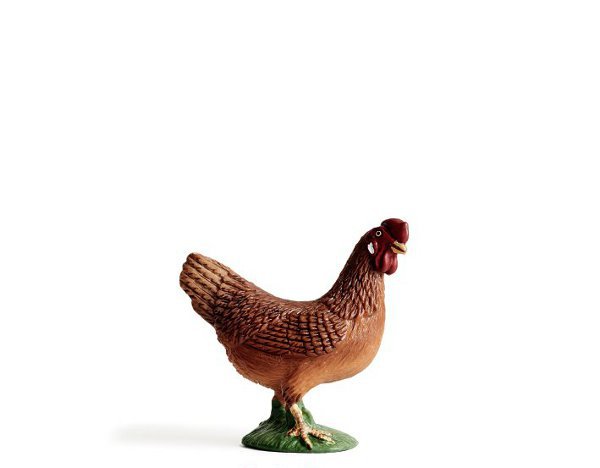
chicken
serves 2
for the chicken
2¼–3¼ lb chicken, preferably corn-fed
1 onion, stuck with 3 cloves
2 sticks of celery, chopped
1 carrot, thickly sliced
1 leek, cleaned, trimmed and thickly sliced
2 large tomatoes, roughly chopped
2 bay leaves
2–3 sprigs of thyme
small bunch of parsley, roughly chopped
9 oz dry white wine
salt
for cooking the cucumbers and making the sauce
10 oz of the prepared chicken broth
4–6 small cucumbers, depending on size, or 1 medium-sized normal cucumber, halved, then each half cut into quarters lengthways
1 tsp (heaping) pastis, optional, but
essential, for me
2 tbsp butter
1 tsp (heaping) flour
1 tsp saffron threads
4 oz double or heavy cream
salt and freshly ground white pepper
small squeeze of lemon juice (optional)
Here is a very nice way to enjoy two meals from one small chicken. The first recipe uses only the breasts of the bird, but taken from a chicken cooked whole, with vegetables and aromatics, making a lovely broth as a matter of course. The second, a perky salad using the thigh and drumstick joints, is something to have the following day, or even the day after that. If there is some broth left, keep the joints covered in that, carefully stored in the fridge.
This breast dish is a relatively posh one, with quite a rich sauce and some delicious hot cucumbers as an accompanying vegetable. It is not often one eats cooked cucumber but, believe me, it is unusually delicate and a fine partner to the saffron flavor. I have a Lebanese grocer’s quite near to where I live, so quite regularly I acquire some small cucumbers from them—the only ones they actually stock, in fact. These suit this dish both for a particularly fragrant flavor, and for their diminutive shape, so nice when left whole.
The second outing, the salad (
page 149
), is a simple assembly of crunchy-crisp skin, moist chicken (the original poaching helps, here), salad greens, cucumber—again, but more usually, raw—and a rather jolly, sweet mustard dressing. The contrast between hot chicken, cool salady things and this kind of sweet-sour lubrication is a winning one. I only hope that you will think so, too.
Put the chicken into a roomy pot, breast side up, and make sure there is enough room around the bird to also accommodate the flavoring vegetables and herbs. Add these, then pour in the wine and sprinkle over a little salt. Pour in enough water so that it does not entirely cover the chicken; try to leave the breasts about a quarter exposed, because the leg and thigh joints (immersed in the liquid) take much longer to cook than the breasts which will, effectively, steam.
Place over a moderate heat and allow to come up to a simmer. When a fair amount of unsightly grey scum has accumulated on the surface, start to skim this off with a large spoon until almost none remains; a little more will be generated throughout the cooking time, but remove that when and if necessary. Now let the chicken cook very gently for 45–50 minutes, covered. Keep a keen eye on the proceedings, as you only want the broth to gently blip, not boil. After the time has elapsed, switch off the heat and leave to rest in the broth, still covered, for a further 15 minutes.
Lift out the bird, flick off any bits of stray vegetable matter and place on a dish. Strain the broth into a bowl using a fine sieve and discard the exhausted vegetables. Wipe out the original cooking pot and return the chicken to it. Return the cooking broth to the chicken in its pot and keep warm, covered.
To cook the cucumbers, first measure off about 10 oz of the broth surrounding the chicken. Put the cucumbers into a medium-sized saucepan that will accommodate them snugly. Pour over the broth, add the pastis (if using) and simmer the cucumbers until tender when poked with a skewer; they should be soft, but not on the verge of collapse. Remove them with a slotted spoon and put to keep warm with the remaining broth surrounding the chicken. Keep the cucumber cooking liquid to hand.
To make the saffron sauce, melt the butter in another small pan and stir in the flour to make a roux. Cook for a minute or two, then start to whisk in the cucumber cooking liquid until smooth and beginning to thicken. Allow to simmer very gently, stirring regularly, for about 10 minutes, before sprinkling in the saffron. Stir it in (don’t use a whisk, as all the saffron stamens will become entangled in it), switch off the heat and cover the pan, so allowing the saffron to infuse in the sauce, for about 5 minutes. Now add the cream, a little salt and pepper, and allow to come back to a simmer. Add a squeeze of lemon juice, for a sharper edge to the sauce.
To serve, take the chicken from the pot and carve off the breasts. Remove the skin from each breast and cut the chicken in slanting slices. Lay on 2 hot plates, arrange the cucumbers alongside and spoon over plenty of the saffron sauce. Some small, peeled new potatoes would be very nice here, too, if you wished.
